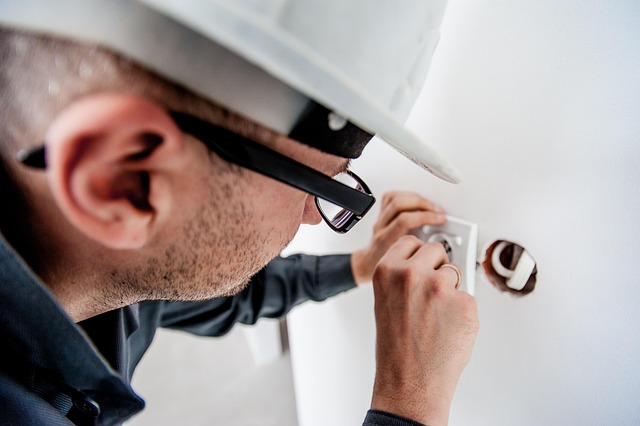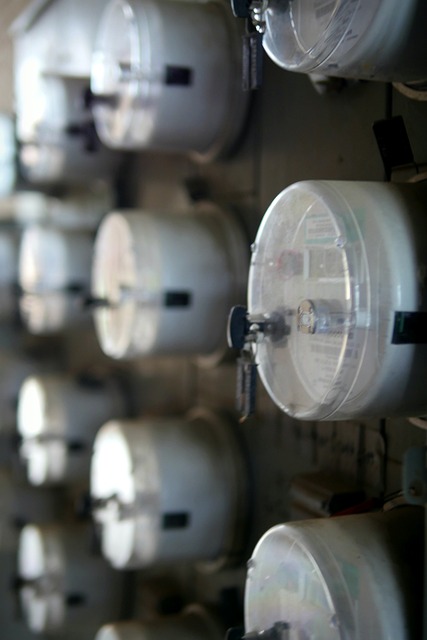Electricians play a vital role in ensuring safe and efficient electrical wiring in new constructions and renovations. They meticulously plan, interpret blueprints, select appropriate wire types, and strategically install outlets and switches while adhering to local codes. Pre-installation preparation includes assessing challenges, gathering materials, and testing equipment. In new builds, they lay cables and connect power supplies; in renovations, they reroute wires and upgrade systems. Proper planning, safety protocols, high-quality materials, and meticulous execution by qualified electricians guarantee reliable electrical solutions tailored to each project's unique needs.
“Electrical wiring is a critical component of any new construction or renovation project. This comprehensive guide, tailored for electricians, covers everything from understanding diverse wiring systems to pre-installation planning. Learn how to navigate complex electrical landscapes with efficiency and safety.
We’ll walk you through a step-by-step installation process, highlighting best practices and safety measures. Ensure your work is up to par by mastering the art of electrical installations, making each project a testament to your expertise.”
- Understanding Electrical Wiring Systems: A Comprehensive Overview
- Pre-Installation Planning and Preparation for Electricians
- Step-by-Step Guide to Installing Electrical Wiring
- Safety Measures and Best Practices for Electrical Installations
Understanding Electrical Wiring Systems: A Comprehensive Overview

Understanding electrical wiring systems is a cornerstone for any electrician, especially when tackling new constructions or renovations. It involves grasping the intricate interplay between various components like conductors, insulators, switches, and outlets, all working in harmony to facilitate the flow of electricity within a structure. Electricians need to be proficient in interpreting blueprints, identifying different wire types and their specifications, and ensuring safe installations that comply with local electrical codes.
In new constructions, electricians play a pivotal role in laying the foundation for future electrical needs by running cables through walls, floors, and ceilings, strategically placing outlets and switches, and connecting them to the main power supply. Renovations present unique challenges, requiring skilled hands to reroute wires, upgrade outdated systems, or integrate modern technology while adhering to safety standards. A comprehensive understanding of electrical wiring enables electricians to navigate these complexities, delivering efficient, reliable, and safe electrical solutions tailored to each project’s unique demands.
Pre-Installation Planning and Preparation for Electricians

Before any electrical wiring installation begins, electricians must engage in meticulous pre-installation planning and preparation. This involves a comprehensive assessment of the construction or renovation project to ensure all necessary materials, tools, and safety measures are ready. Electricians study architectural plans and electrical drawings to identify potential challenges and determine the most efficient wire routing. They also inspect existing infrastructure, such as walls, floors, and ceilings, to gauge accessibility and plan for any necessary modifications.
Preparation includes gathering the appropriate electrical components, testing equipment, and safety gear. Electricians may coordinate with other tradespeople to ensure smooth collaboration and resolve any potential conflicts between different aspects of the project. Proper planning and preparation are vital to guarantee a safe, effective, and compliant electrical wiring installation, ultimately ensuring the satisfaction of both electricians and clients.
Step-by-Step Guide to Installing Electrical Wiring

Installing electrical wiring in new constructions or renovations requires careful planning and execution, with a qualified electrician playing a pivotal role. Here’s a step-by-step guide to ensure the process is safe and efficient:
1. Plan and Design: Begin by studying architectural plans to determine the placement of outlets, switches, and fixtures. Identify load requirements for each area and calculate the number of circuits needed. This initial phase involves coordinating with architects and engineers to incorporate electrical considerations into the building design.
2. Prepare the Space: Once construction reaches the wiring stage, prepare the space by ensuring walls are dry, clean, and free from debris. Install boxes for outlets and switches, verifying their placement aligns with the design plans. Use appropriate tools to drill holes for wire passage, taking care not to damage nearby structural elements or pipes.
Safety Measures and Best Practices for Electrical Installations

When it comes to electrical installations, safety is paramount. A qualified electrician understands the importance of adhering to strict protocols to ensure the well-being of occupants and prevent accidental fires or electrocution. This includes using insulated tools, wearing protective gear like gloves and safety glasses, and ensuring proper ventilation during work. Regular inspections are crucial to identify potential hazards and ensure compliance with local electrical codes.
Best practices extend beyond individual safety. Proper labeling of circuits and switches is essential for easy identification and future maintenance. Using high-quality materials and following manufacturer guidelines ensures durability and reliability. Additionally, running cables neatly and organizing them efficiently not only saves time during troubleshooting but also reduces the risk of damage. A well-planned and executed electrical installation translates to a safer, more efficient home or commercial space.
When it comes to new constructions or renovations, hiring a qualified electrician is paramount. By understanding electrical wiring systems, planning meticulously, and adhering to safety best practices, electricians ensure structures are equipped with reliable power distribution. A well-installed electrical system not only enhances the property’s functionality but also guarantees safety for residents. Trusting this crucial task to professionals ensures a smooth process, leaving homeowners confident in their home’s electrical integrity.
